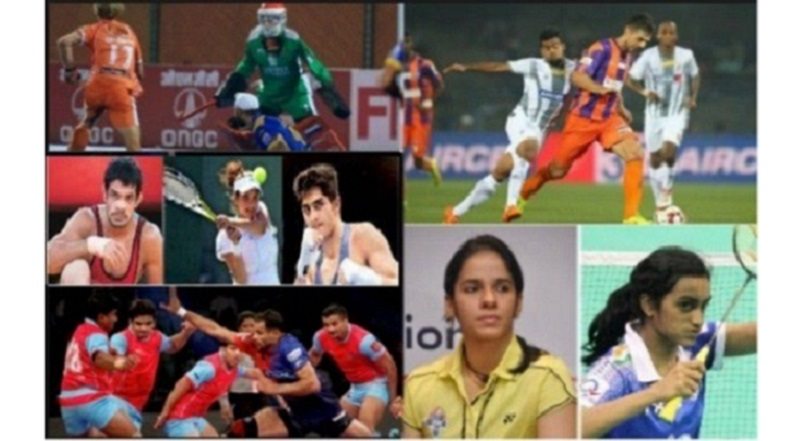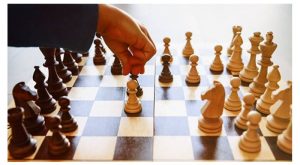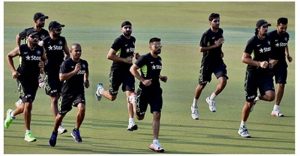
Thanks to the impressive growth in India’s economy and the country’s young demographics, India is fast emerging as the preferred venue for major sporting events of the world. In the past, India has successfully hosted the Commonwealth games, Asian Games, World Cups of Hockey and Cricket, and today there are several sports league operational in India that feature international sports players.
Despite India’s ability to host high-profile international sports events, India’s performance in sports, barring a few sports, can be termed as dismal if you look at its performance over the last few decades. India still doesn’t win a lot of medals at international sports events such as the Olympics. Despite the large amount of public and private investment in sports, there has not been much improvement in sports in India, and it is primarily because of the inefficient sports governance structure in India.
Over the years, Sports has become a means to demonstrate a nation’s supremacy in the global arena; even the United Nations recognizes sport as a means to promote education, health, development and peace. That is why governments around the world invest in sports and get involved in sports governance. Be it countries like the US, China, Australia or Germany, there is a strong sports governance that helps them yield great result in sports at the international levels.
India has a very old history and rich culture of sports, and great importance has been given to physical fitness and perfection right since the ancient times. Ancient scriptures talk about several traditional sports that people used to play in their leisure time and to maintain physical fitness. Bow and arrow – Archery, the famous sudarshan chakras – Discuss, toran – Javelin, Mallayudhha – Wrestling, Bharashram – Weight-Lifting, Bharamanshram – Walking, Chess- Chaturanga- Shatranj, Chaugan-Polo, horse riding, were the major sports played and nurtured in ancient India. Many of these sports are part of the Olympic games today. Traditional indigenous games such as Kabaddi, Kho-Kho, Kushti, Gulidanda have always been a part of India’s great culture and are played even today by the masses. Modern sports like Cricket, Tennis, Volleyball were also first played in India.
So, it is ironic that despite having a very long history of sports, India, as a country has been struggling to excel in sports at international sporting events. Only a couple of sports like badminton and shooting have established a system that is proving productive and producing stars who are performing well at the international levels. the rest of sporting disciplines remain in a state where you hardly see any progress. India is too far behind in certain sports like volleyball and basketball.
Today India, a country of over 1 billion people and currently an economic power, is trying to prove to the world that the country is a force to reckon with. However, in order to truly do so, India will need to excel in sports as well. With so much public involvement and association of national pride with sports, there is no other way out but for the government to be involved in sports, for better governance of sports so that the sporting scene in India really improves.
Next, we take a closer look at the Sports Governance in India. In the current model of Sports Governance in India, several Government bodies as well as autonomous bodies, recognized by the Olympic charter, are involved in managing the various sports in India.
Ministry of Youth Affairs and Sports (MYAS), Indian Olympic Association (IOA), State Olympic Association (SOA), National Sports Federation (NSF), Sports Authority of India (SAI), Board of Control for Cricket in India (BCCI) are among the more powerful bodies involved in sports governance in India. The Ministry of Youth Affairs and Sports (MYAS) in India provides funding to the various sports bodies, and the Sports Authority of India (SAI) ensures there is adequate sports infrastructure, including sports institutes and training centers in India. So, the main role of the government bodies is to provide sports infrastructure, promote capacity building and to provide financial assistance to improve the sports environment in India. In general, when it comes to sports governance, there are various issues that these governing bodies have to deal with almost on a regular basis; these issues can be catgorised into Accountability Issues, Administrative Issues, Developmental Issues.
While the various sports governing bodies do receive funding from the government bodies, a government appointed observer overseas how the funds are utilized, how the teams are selected, and closely overseas the various internal processes. Almost all sports bodies have politicians or retired bureaucrats as their office bearers so that they can use their political clout in various sports related matters, including funding. Despite having a detailed governance structure, and the government spending adequate funds on sports, India has been unable to excel in sports at the highest levels. The major reason for this is because there is less transparency in sports governance in India. Many sportspersons allege nepotism, fiefdom, unaccountability and financial irregularities in the various sports federations that are in charge of managing the various sports in India. Corruption has become synonymous with sports administration in India. Whether it is the most popular cricket or hockey or weightlifting, most of the sports authorities in India have come under attack due to corruption charges.
Involvement of politicians in the administration of sports bodies for a very long period and controversies surrounding 2010 Commonwealth Games dented the image of sports administrators in India. People of India have been hearing such allegations for the past several decades, so it is high time that changes are made to the governance structure in India so that only meritocracy is rewarded.
India should also try to learn better sports governance from other countries like US, China and Australia. These countries are sports powerhouses and win significant number of medals in every Olympics. Our neighbouring country China has made very impressive progress in sports, so much that when it hosted the 2008 Olympics, the country topped the medals table, beating the likes of US and Russia, two countries that would regularly top the medals table in most of the earlier Olympics.
It may not be easy to replicate what China did because ground realities in India and China are different including the political system. While the Chinese model involves a lot of state authority, which may not suit a democratic country like India, India can definitely learn from countries like US and Australia. India should specifically learn from Australia as there are several common sports that are popular both in India as well as Australia, such as Cricket, Hockey, Tennis, Football, and Athletics.
Another reason why India has never fared really well in sports is because of its attitude toward sports. While India does have an ancient culture of sports, in the decades following Independence, people of India have been shunning sports. In the last few decades sports seem to have disappeared from our culture as people started giving more importance to studies. This culture and attitude still happen to be a major stumbling block in improving India’s sporting standards. Denial of access to sports infrastructure due to poverty, concentration of stadiums and other sports avenues only in cities, lack of encouragement to girls to participate in sports, etc, have impaired the development of a positive sports culture in the country.
The change in this attitude has to begin right from the primary education level if India desires to build a sporting culture in the country. The education system in India should give more importance to sports, it should be encouraged. Just like studies, even sports should be given more weightage in school and schools should provide children the flexibility to pursue sports. India needs to give sports the importance it really deserves.
Thankfully, the Indian government has been trying to encourage sports in recent times; the most notable initiative is the ‘Khelo India’ initiative. The Khelo India Youth Games, held annually, are the national level multidisciplinary grassroot games in India held for two categories, namely under-17 years school students and under-21 college students. However, a lot more still needs to be done, and there is an urgent need to upgrade the sports infrastructure in the country. The state and the central government must ensure there is at least basic, bare minimum facility at the grassroots level, in villages and small towns, so that those who want to get involved in sports can do so.
There is no doubt that there is a close association of excellence in sports and the national pride it evokes. It also sends a message to the world that the country is a force to reckon with. No wonder, the most developed countries in the world spend a lot of money on sports infrastructure and training, and have a Sports Governance structure that is transparent, responsible, and result-oriented. While the sports scenario in India has improved a bit, a lot more needs to be done, and it has to take cues from these developed countries. Once could argue that the existing sports governance model in India has failed to achieve its desired objectives and a new model or major changes in the existing structure is long overdue.
So, here’s the way ahead for Sport Governance in India if the government is serious about improving India’s capabilities in sports and wants India to excel in sports at the international levels.
The biggest problem with sports bodies in India is that there seems to be complete absence of checks and balances which allows some of these bodies to function in an unprofessional manner. It is important to clearly outline the roles and responsibilities of these sports bodies, take steps to increase transparency in their functioning, increase transparency in the way selections happen for the national teams, make it mandatory for them to file their financial reports and to make public disclosure of information on a timely basis.
This will help to curb the abuse of power and financial irregularities by the office bearers, will ensure merit is rewarded, and will curb nepotism and favouritism.
It’s also important that all the sports universities and sports training academies operate under the guidance of a unified SAI (Sports Authority of India), which will allow the body to implement international best practices in sports training and education across these institutions. Having a unified SAI will also allow it to carry out sports infrastructure related work uniformly, right from the grass-root level, across the length and breadth of the country. More importantly, it is important for the sports administration to project a professional attitude and take regular feedback from sportspersons as well as spectators so that they can help drastically improve the sporting standards in India.








